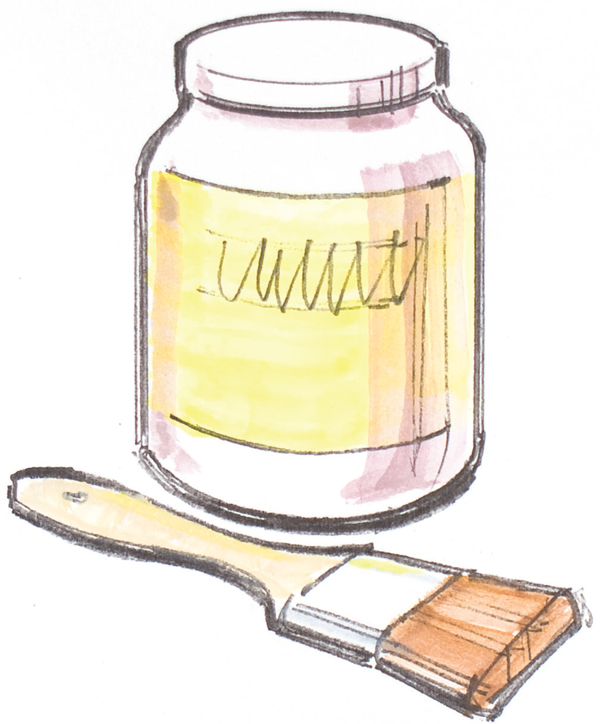
There are many options when it comes to painting surfaces, also called supports. The surface you choose depends on your preference and desired results.
Stretched canvas is the most common oil painting surface. This type of canvas is stretched across a frame of stretcher bars (the wooden pieces that the canvas is attached to). For large canvases, it’s good to have strong, sturdy stretcher bars. Canvas is available in cotton or linen. While cotton is less expensive, it may not remain as taut as linen over time. There is also a range of different textures. The smoothness of a fine-weave canvas works best for delicate paintings such as a detailed portrait, while the coarseness of a rough-weave canvas is best for paintings that require thick layers of paint.
Manufactured stretch canvases usually come primed and are ready for the artist to begin oil painting. Stretched canvases are recommended for large paintings because they are relatively lightweight for their size.
Masonite and plywood panels are available primed and ready to use, or you can make your own. Relatively inexpensive, these panels are good for smaller paintings.
Masonite and plywood panels can also be bought with canvas glued to one side. These panels provide the genuine canvas texture along with the rigidness of Masonite or plywood board.
Cradled Masonite and plywood panels have a wood frame on the back. The wood frame “cradles” the panel, making it sturdier and less prone to warping.
Canvas-wrapped panels are made of Masonite, plywood or cardboard, and are wrapped with a primed canvas. They are similar to panels with canvas glued to one side. However, if the core is made of cardboard, the panel may swell and warp over time.
Canvas pads are sheets of primed canvas in pad form. These sheets are especially good for practice sessions. Just cut the sheet to the size you want and use bulldog clamps to attach the canvas to a Masonite board.
You can make your own painting surfaces from 1⁄8-inch (3mm) Masonite or 1⁄4-inch (6mm) birch plywood panels. First, sand the surface with sandpaper. This will roughen the surface so that the gesso will adhere. Then apply three coats of gesso, painting the first coat side to side, the second coat up and down, then the third coat side to side. This will mimic the texture of canvas. You can also apply gesso in an irregular pattern to create an uneven surface texture. Covering the back of the panel with gesso will help prevent warping.
Using an ordinary house paint brush, apply two or three coats of gesso, alternating your strokes with each coat for your desired effect. Follow the manufacturer’s instructions on the gesso container.
If a canvas appears loose, insert wooden corner wedges into the inside corner slots of the stretcher bars. This may be done long after a painting is completed to tighten a stretched canvas that is loose and saggy.

No matter the type, all unprimed surfaces need to be coated with gesso. Otherwise, the paint may not hold up over time. Gesso is a liquid or gel that can be painted onto the surface with a house paint brush. Acrylic gesso primer works with oil paints and is easy to clean off brushes. Gesso is usually white, but it’s also available clear or colored.